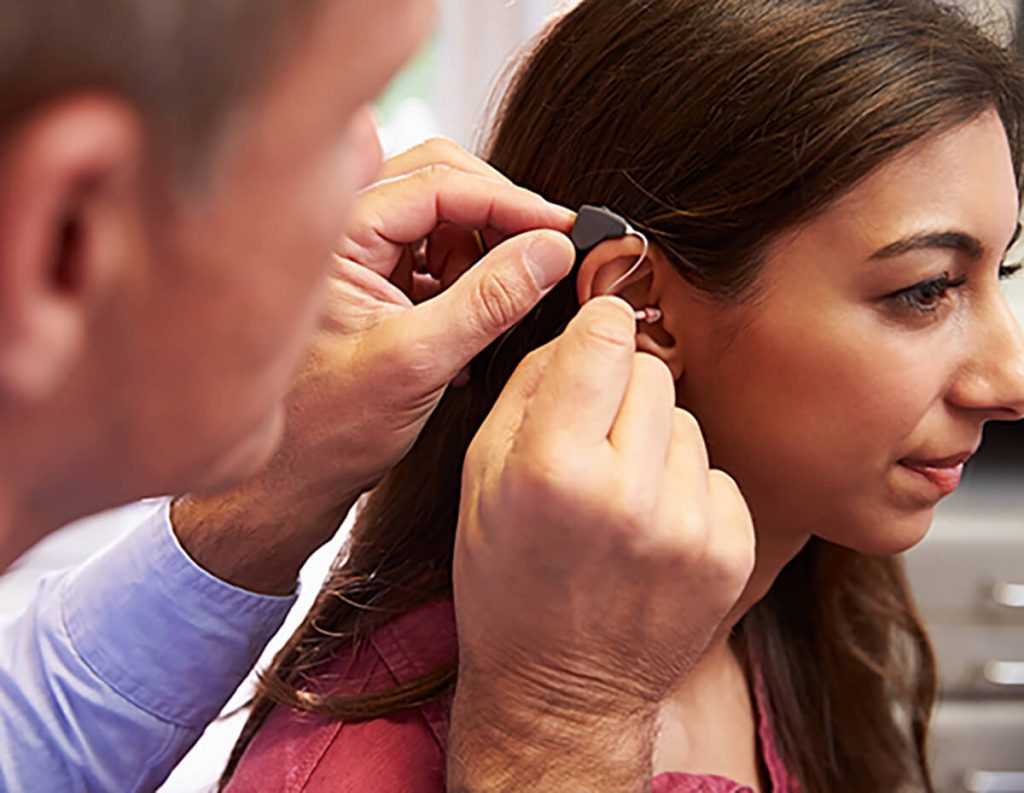Are you considering purchasing hearing aids?
If so, it can seem overwhelming at first. There are a lot of options out there, and the obscure terminology doesn’t help.
That’s why we’re going to explain the most common and important terms, so when you work with your hearing professional you’ll be prepared to find the best hearing aid for you.
Hearing loss and testing
High-frequency hearing loss – this is the most common form of hearing loss. Patients with high-frequency hearing loss have the most difficulty hearing higher frequency sounds, like the sounds of speech.
Sensorineural hearing loss – this type of hearing loss occurs when there is damage to the nerve cells of the inner ear. This is the most common type of permanent hearing loss caused by exposure to loud noise, aging, genetics, or other medical conditions.
Bilateral hearing loss – hearing loss in both ears, which may be symmetrical (the same level of loss in both ears) or asymmetrical (different levels of loss in each ear). Bilateral hearing loss is usually best treated with two hearing aids.
Audiogram – the graph which provides a visual representation of your hearing test results. The vertical axis measures decibels (volume) and the horizontal axis measures frequencies (pitch). The hearing specialist records the lowest decibel level that you can hear at each frequency. If you require higher volumes to hear higher frequencies, your audiogram will show a pattern of high-frequency hearing loss.
Decibel (dB) – the unit used to measure sound level or intensity. Normal conversation registers at about 60 decibels, and prolonged exposure to any sound over 80 decibels could cause permanent hearing loss. Since the scale is logarithmic, an increase of 6-10 decibels doubles the volume of the sound.
Frequency – represents pitch as measured in hertz. Think of moving up the keys on a piano, from left to right (low-frequency/pitch to high-frequency/pitch).
Threshold of hearing – The lowest decibel level that can be heard at each frequency.
Degree of hearing loss – Hearing loss can be classified as mild (26-40 dB loss), moderate (41-55), severe (71-90), or profound (91+).
Tinnitus – a persistent ringing or buzzing in the ears when no external sound is present. Often a sign of hearing damage or loss.
Hearing aid styles
Digital hearing aid – hearing aids that include a digital microchip, used to custom-program the hearing aids to match each individual’s unique hearing loss.
Hearing aid style – the type of hearing aid defined by its size and position in relation to the ear. Main styles include behind-the-ear, in-the-ear, and in-the-canal.
Behind the ear (BTE) hearing aids – the majority of hearing aid parts are contained within a case that fits behind the ear, connected to an earmold by a clear plastic tube. Mini-BTE hearing aids are also available.
In the ear (ITE) hearing aids – the hearing aid parts are contained within a case that fits in the outer part of the ear.
In the canal (ITC) hearing aids – the hearing aid parts are contained in a case that fits within the ear canal. Completely-in-the-canal (CIC) hearing aids are also available that are nearly invisible.
Hearing aid parts
Earmold – a piece of plastic, acrylic, or other soft material that is molded to the contours of the patient’s ears, used for the fitting of hearing aids.
Microphone – the hearing aid component that picks up environmental sound and converts the sound waves into an electrical signal.
Digital signal processor – a specialized microprocessor within a hearing aid that can manipulate and enhance sound.
Amplifier – the part of the hearing aid that increases the volume of sound.
Speaker – the hearing aid component that delivers the enhanced sound to the ear.
Wireless antenna – available in certain hearing aids, allowing for wireless connectivity to compatible devices such as phones and music players.
Hearing aid advanced features
Variable programming – hearing aid programming that allows the user to change sound settings depending on the environment (e.g. at home versus in a busy restaurant).
Directional microphones – microphones that can focus on sound coming from a specific location while minimizing background noise.
Telecoils – a coil placed within the hearing aid that allows it to connect to wireless signals emanating from telephones, assistive listening devices, and hearing loops installed in public venues.
Noise reduction – functionality that helps the hearing aid distinguish speech sounds from background noise, resulting in the enhancement of speech and the suppression of distracting noise.
Bluetooth technology – allows the hearing aid to communicate wirelessly with several devices, including mobile phones, computers, MP3 players, and other compatible devices.



